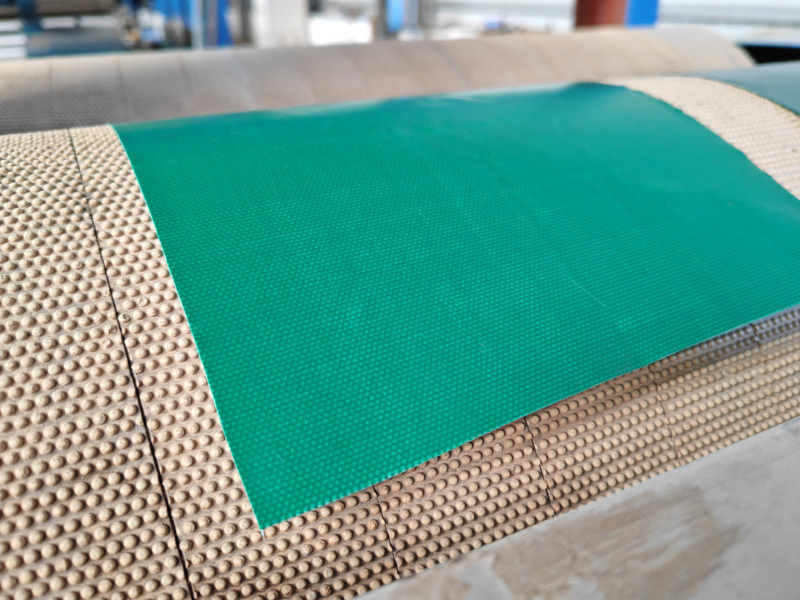Integrating Fire-Proof Glass Fabric into Modern Architecture: A Comprehensive Guide
Aug 10,2025
Integrating Fire-Proof Glass Fabric into Modern Architecture
Table of Contents
Introduction to Fire-Proof Glass Fabric
The Importance of Fire Safety in Architecture
Benefits of Fire-Proof Glass Fabric
Applications of Fire-Proof Glass Fabric in Architecture
Design Possibilities with Fire-Proof Glass Fabric
Installation and Maintenance Considerations
Compliance and Regulations for Fir

Integrating Fire-Proof Glass Fabric into Modern Architecture
Table of Contents
- Introduction to Fire-Proof Glass Fabric
- The Importance of Fire Safety in Architecture
- Benefits of Fire-Proof Glass Fabric
- Applications of Fire-Proof Glass Fabric in Architecture
- Design Possibilities with Fire-Proof Glass Fabric
- Installation and Maintenance Considerations
- Compliance and Regulations for Fire Safety
- Future Trends in Fire-Proof Materials in Architecture
- Conclusion
- FAQs
Introduction to Fire-Proof Glass Fabric
Fire-proof glass fabric is increasingly being integrated into modern architecture due to its unique properties and advantages. This innovative material combines the aesthetic qualities of glass with enhanced fire resistance, making it an ideal choice for contemporary architectural designs. As safety standards continue to evolve, integrating fire-resistant materials like glass fabric has become crucial for architects and builders aiming to create secure and visually appealing structures.
The Importance of Fire Safety in Architecture
Fire safety is a paramount concern in architectural design, influencing the choice of materials and construction methods. The integration of fire-proof glass fabric plays a significant role in enhancing the safety of buildings. Not only does it protect occupants and property from fire damage, but it also meets stringent safety regulations set by building authorities. By prioritizing fire safety, architects can ensure that their designs not only look impressive but also provide lasting security and peace of mind.
Understanding Fire Risks in Modern Architecture
Modern buildings face various fire hazards, from electrical faults to flammable materials. As urban spaces grow denser, the potential for fire-related incidents increases. Therefore, incorporating fire-resistant materials like glass fabric is essential in minimizing risks and ensuring that structures can withstand extreme conditions.
Benefits of Fire-Proof Glass Fabric
Integrating fire-proof glass fabric into architectural designs offers numerous benefits, making it a preferred choice for many modern projects.
1. Enhanced Safety
The primary advantage of fire-proof glass fabric is its ability to withstand high temperatures without compromising structural integrity. This feature is crucial in protecting lives and property during a fire.
2. Aesthetic Versatility
Fire-proof glass fabric can be produced in various colors, textures, and opacities, allowing architects to incorporate it seamlessly into their designs. This versatility enhances the aesthetic appeal of buildings while maintaining safety standards.
3. Lightweight and Durable
Despite its strength, fire-proof glass fabric is lightweight, making it easy to handle and install. Its durability also ensures that maintenance costs are kept to a minimum over the building's lifespan.
4. Energy Efficiency
Many fire-proof glass fabrics offer excellent thermal insulation properties, contributing to a building's overall energy efficiency. This feature can reduce heating and cooling costs, making it an environmentally friendly option.
5. Compliance with Safety Standards
Using fire-proof glass fabric helps architects comply with local and international fire safety regulations, ensuring that their designs meet the necessary standards.
Applications of Fire-Proof Glass Fabric in Architecture
Fire-proof glass fabric is utilized in various architectural applications, each showcasing its unique properties and advantages.
1. Facades and Curtain Walls
In contemporary architecture, facades made from fire-proof glass fabric provide both aesthetic appeal and fire safety. These materials can be designed to reflect light creatively, enhancing the building's overall look while ensuring compliance with safety standards.
2. Partition Walls
Fire-proof glass fabric is ideal for interior partition walls, particularly in commercial spaces. It provides a modern and open feel while offering fire resistance.
3. Skylights and Roofs
Integrating fire-proof glass fabric into skylights or rooftop designs can improve natural light flow while maintaining safety. This application is particularly beneficial in large public buildings and spaces.
4. Balustrades and Railings
Using fire-proof glass fabric in balustrades and railings adds a touch of elegance and sophistication. These elements enhance safety without compromising visibility or design.
5. Decorative Elements
Architects can also use fire-proof glass fabric for decorative elements, such as art installations and feature walls, to create unique focal points that prioritize safety and style.
Design Possibilities with Fire-Proof Glass Fabric
The design possibilities with fire-proof glass fabric are virtually limitless. Architects can leverage this material to create innovative and stunning structures that adhere to safety standards.
1. Combining Materials
Architects can blend fire-proof glass fabric with other materials, such as steel and wood, to create dynamic contrasts and textures in their designs. This combination can lead to striking visuals that capture attention.
2. Customization Options
Fire-proof glass fabric can be custom-designed to meet specific aesthetic and functional requirements. This flexibility allows for more personalized designs that reflect the client's vision.
3. Innovative Installations
The lightweight nature of fire-proof glass fabric enables unique architectural installations that were not possible with traditional materials. This adaptability encourages creative approaches to building design.
4. Sustainable Architecture
Integrating fire-proof glass fabric into sustainable designs promotes eco-friendly practices. The material's energy efficiency contributes to a lower carbon footprint, aligning with global efforts towards sustainable architecture.
Installation and Maintenance Considerations
Installing fire-proof glass fabric requires careful planning and execution. Understanding the installation process and ongoing maintenance is crucial for ensuring the longevity and effectiveness of this material.
1. Professional Installation
It is essential to hire skilled professionals for installing fire-proof glass fabric. Their expertise ensures that the material is fitted correctly and adheres to safety regulations.
2. Regular Inspections
Conducting regular inspections of fire-proof glass fabric installations can help identify any wear or damage over time. Early detection of issues can prevent potential safety hazards.
3. Cleaning and Maintenance
Maintaining the aesthetic appeal of fire-proof glass fabric involves regular cleaning. Using appropriate cleaning solutions will prevent damage and keep the material looking its best.
Compliance and Regulations for Fire Safety
Ensuring compliance with fire safety regulations is critical when integrating fire-proof glass fabric into architectural designs. Understanding local building codes and safety standards will aid in adherence.
1. Building Codes and Standards
Each region has specific building codes that dictate the requirements for fire-resistant materials. Familiarizing oneself with these regulations will ensure that the architecture complies with safety standards.
2. Fire Ratings
Understanding the fire ratings of various materials is essential. Fire-proof glass fabrics typically come with specific ratings indicating their fire resistance, which is crucial for compliance.
3. Documentation and Certification
Obtaining the necessary documentation and certification for fire-proof glass fabric is vital for legal compliance. Architects and builders must keep records of materials used and their fire-resistant properties.
Future Trends in Fire-Proof Materials in Architecture
The future of fire-proof materials in architecture looks promising, with continuous innovations enhancing both functionality and aesthetics.
1. Advanced Materials Development
Research into advanced materials that offer even greater fire resistance while remaining lightweight and versatile is underway. These innovations will expand design possibilities for future architecture.
2. Smart Fire-Resistant Materials
Emerging technologies are leading to the development of smart materials that respond to fire conditions. These materials can provide real-time alerts and adapt to changing environments.
3. Sustainable and Eco-Friendly Options
The demand for sustainable building materials is on the rise. Future developments in fire-proof glass fabrics will likely focus on eco-friendly production methods and materials that align with sustainability goals.
Conclusion
Integrating fire-proof glass fabric into modern architecture presents a unique opportunity to enhance both safety and design. As architects continue to prioritize fire safety in their designs, the use of advanced materials like fire-proof glass fabric will only grow. This innovative material not only meets stringent safety regulations but also offers aesthetic versatility, energy efficiency, and compliance with evolving standards. By embracing this material, architects can create stunning structures that provide lasting safety and security for occupants and the surrounding community.
FAQs
1. What is fire-proof glass fabric?
Fire-proof glass fabric is a specialized material designed to withstand high temperatures and prevent the spread of flames while offering aesthetic appeal.
2. How does fire-proof glass fabric enhance building safety?
By integrating fire-proof glass fabric, buildings can protect occupants from fire hazards, comply with safety regulations, and minimize property damage.
3. Can fire-proof glass fabric be customized?
Yes, fire-proof glass fabric can be customized in terms of color, texture, and design to suit specific architectural needs and preferences.
4. What are the maintenance requirements for fire-proof glass fabric?
Regular inspections and cleaning with appropriate solutions are essential for maintaining the integrity and appearance of fire-proof glass fabric.
5. What regulations must be followed when using fire-proof glass fabric in construction?
Compliance with local building codes, understanding fire ratings, and obtaining necessary documentation and certifications are crucial when using fire-proof glass fabric in construction.
Hot Tags:
NEXT:
Related Posts
Contact Us
E-mail:
tangchitarpaulin@gmail.com
WhatsApp:
Address:
500 meters west of the highway intersection in Xinxing Industrial Park, Yuanshi County, Hebei Province






